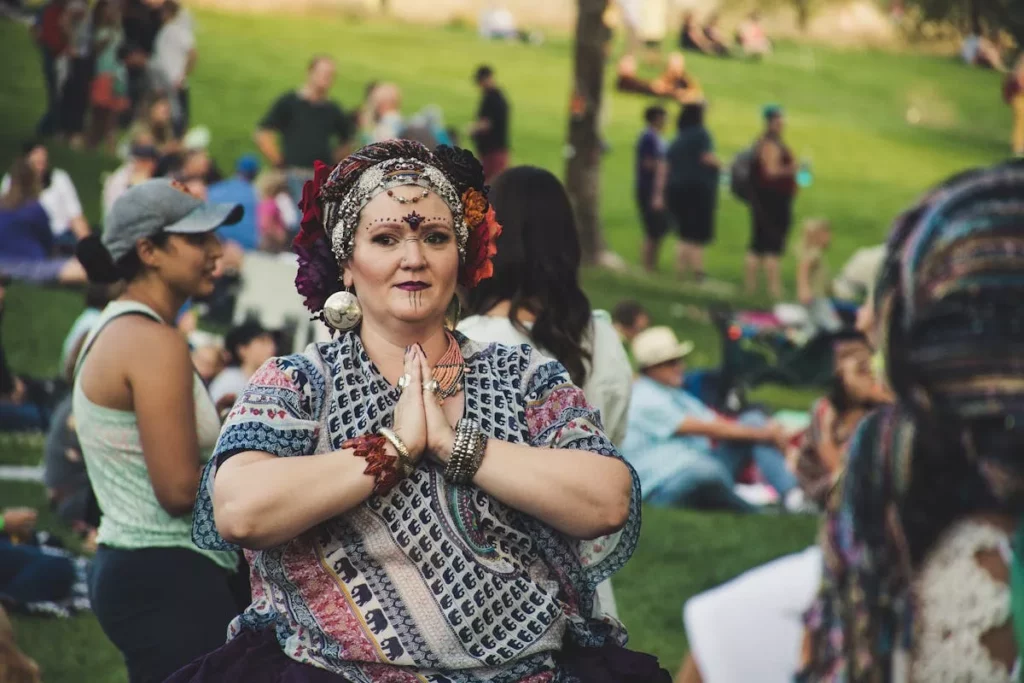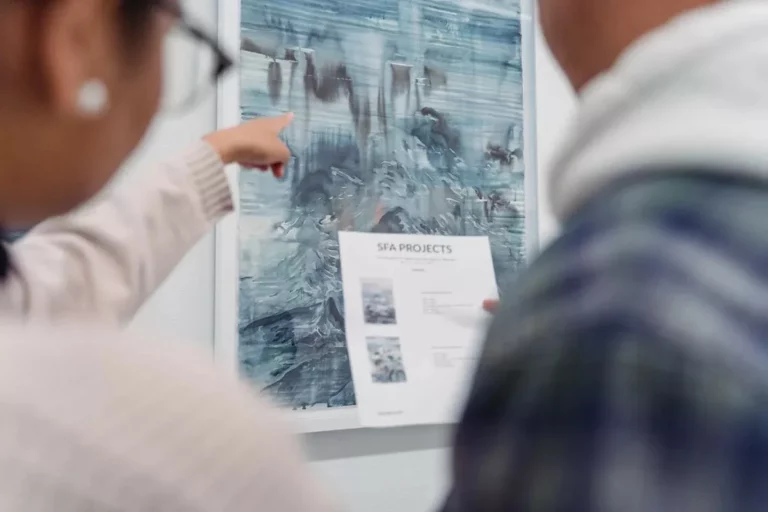Artistic expression holds the remarkable power to shape narratives, influence perceptions, and ignite societal transformation. From the stirring melodies of protest songs to the captivating movements of contemporary dance, the impact of artistic expression on society is profound and far-reaching. In this blog post, we delve into the intricate ways in which artistic creativity transcends boundaries to resonate with individuals, challenge norms, and drive positive change. Join us on a journey through the captivating realm where art meets activism, exploring the captivating intersection of artistic expression and its profound impact on society.
The Role of Artistic Expression Impact on Society in Shaping Cultural Norms
Evolution of societal values through art
Artistic expression has long been a driving force behind the evolution of societal values and norms. Through various art forms such as visual arts, music, theater, and dance, artists have challenged existing beliefs and traditions, sparking critical conversations that have led to transformative changes in society. By portraying diverse perspectives and experiences, art has the unique ability to influence how individuals perceive the world around them.
Impact of art in challenging existing beliefs and traditions
Art has the power to challenge deeply ingrained societal norms by presenting alternative narratives and perspectives. It serves as a mirror to reflect on cultural practices and beliefs, encouraging individuals to question the status quo and consider new possibilities. Artists often use their work to address pressing social issues, shedding light on injustices and inequalities that require attention and action.
Case studies showcasing art-led social change
Numerous case studies highlight the profound impact of artistic expression on society. For example, the Harlem Renaissance of the 1920s and 1930s brought African American art, music, and literature to the forefront, challenging racial stereotypes and contributing to the civil rights movement. Additionally, contemporary artists like Banksy use street art as a platform to address political and social issues, provoking public discourse and advocacy for change.
Key Takeaways:
- Artistic expression plays a crucial role in shaping cultural norms and values.
- Art challenges existing beliefs and traditions, fostering critical thinking and dialogue.
- Case studies demonstrate how art-led social change can drive societal transformation.
For further reading on the impact of art on society, you can explore the Museum of Modern Art’s article on Art and Social Change.
Enhancing Empathy and Understanding Through Visual Arts
Utilizing visual arts to promote empathy and social awareness
Visual arts serve as a powerful medium for fostering empathy and social awareness within society. Through evocative imagery and symbolism, artists can communicate complex emotions and experiences that resonate with viewers on a deep level. By showcasing diverse perspectives and narratives, visual art encourages individuals to step into the shoes of others, cultivating empathy and understanding for different lived experiences.
Examining how art fosters understanding across diverse communities
Artistic expression transcends language barriers and cultural differences, creating a universal language that connects people from various backgrounds. Visual arts exhibitions and installations bring together individuals from diverse communities, providing a platform for dialogue and exchange of ideas. Through shared artistic experiences, communities can find common ground and celebrate the richness of cultural diversity.
Art as a tool for fostering dialogue and inclusivity
Art has the ability to spark meaningful conversations on social issues and promote inclusivity within society. By depicting marginalized voices and advocating for social justice, visual artists initiate discussions that challenge prejudices and stereotypes. Art installations in public spaces encourage public engagement and reflection, fostering a sense of community and shared responsibility for creating a more inclusive and empathetic society.
Key Takeaways:
- Visual arts promote empathy and social awareness by communicating complex emotions and experiences.
- Artistic expression fosters understanding across diverse communities, bridging cultural divides.
- Art serves as a tool for fostering dialogue on social issues and promoting inclusivity within society.
Music as a Catalyst for Social Movements
Historical examples of music driving social change
Throughout history, music has played a pivotal role in driving social change and sparking movements for equality and justice. Iconic songs like “We Shall Overcome” during the civil rights era in the United States and “Bella Ciao” in the Italian anti-fascist resistance movement exemplify how music can galvanize communities and inspire collective action. Musicians have often used their platform to amplify marginalized voices and advocate for societal transformation.
Analyzing the influence of music on societal attitudes and behaviors
Music has a profound influence on shaping societal attitudes and behaviors by conveying powerful messages and emotions. Lyrics that address political oppression, discrimination, and social inequalities resonate with audiences, prompting reflection and action. Through music, artists can cultivate empathy, solidarity, and a sense of unity among listeners, fostering a shared commitment to social change.
The power of lyrics in conveying messages of resistance and unity
Lyrics have the power to communicate messages of resistance, unity, and hope, rallying individuals around common causes and values. Protest songs have historically been used to voice discontent and challenge oppressive systems, inspiring movements for justice and equality. By harnessing the emotional impact of music, artists can ignite passion and activism, driving positive shifts in societal consciousness.
Key Takeaways:
- Music has historically served as a catalyst for social movements, inspiring collective action and solidarity.
- The influence of music on societal attitudes and behaviors is significant, fostering empathy and unity among listeners.
- Lyrics play a crucial role in conveying messages of resistance, unity, and social change through music.
Theater and Its Role in Addressing Social Issues
Theater’s ability to provoke thought and discussion on social issues
Theater has long been recognized as a powerful medium for provoking thought and sparking discussions on pressing social issues. Through compelling narratives and emotive performances, theater productions can shine a spotlight on themes such as inequality, discrimination, and human rights violations. By immersing audiences in thought-provoking storylines, theater challenges preconceptions and encourages critical reflection on the complexities of societal dynamics.
Highlighting plays that have spurred societal transformation
Several plays throughout history have catalyzed societal transformation by addressing controversial social issues head-on. Works like “A Raisin in the Sun” by Lorraine Hansberry, which delves into racial discrimination and socioeconomic disparities, and “The Laramie Project” by Moisés Kaufman, which tackles LGBTQ+ rights and hate crimes, have sparked conversations and inspired advocacy for change. These theatrical pieces demonstrate the power of storytelling in influencing public discourse and shaping societal values.
Collaborative theater projects that aim to advocate for change
Collaborative theater projects bring together artists, activists, and communities to create impactful experiences that advocate for social change. By engaging with local issues and amplifying diverse voices, these projects encourage audience participation and empathy towards marginalized groups. The immersive nature of theater allows for a deeper understanding of complex social issues, fostering a sense of collective responsibility and solidarity among participants.
Key Takeaways:
- Theater serves as a catalyst for thought and discussion on social issues, prompting critical reflection among audiences.
- Plays that address controversial topics have the potential to inspire societal transformation and advocacy for change.
- Collaborative theater projects engage communities in dialogue and action, fostering empathy and social awareness.
The Intersection of Dance and Social Change
Exploring how dance can communicate narratives of resilience and empowerment
Dance serves as a powerful medium for communicating narratives of resilience, empowerment, and social change. Through intricate movements and expressive choreography, dancers convey emotions and stories that resonate with audiences on a visceral level. Whether through traditional cultural dances or contemporary performances, dance has the capacity to inspire and uplift, bringing attention to important social issues and advocating for positive transformation.
Dance as a medium for challenging stereotypes and promoting diversity
Dance has the unique ability to challenge stereotypes, break down barriers, and promote diversity within society. By showcasing a diverse range of styles, techniques, and cultural influences, dancers celebrate the richness of human expression and identity. Through inclusive dance performances and collaborations, artists can foster greater understanding and appreciation for the diversity of experiences and perspectives present in our communities.
Initiatives using dance to advocate for social justice and equality
Numerous initiatives around the world harness the power of dance to advocate for social justice and equality. From dance activism projects that address gender inequality and racial discrimination to community dance programs that support marginalized populations, dance initiatives play a crucial role in effecting positive social change. By engaging with audiences through movement and storytelling, these initiatives amplify voices that are often unheard, driving awareness and action towards a more equitable and inclusive society.
Key Takeaways:
- Dance communicates narratives of resilience and empowerment, inspiring audiences to champion social change.
- Dance challenges stereotypes and promotes diversity by showcasing a range of cultural influences and perspectives.
- Initiatives leveraging dance for social justice advocate for equality and amplify marginalized voices, fostering greater inclusivity within society.
Can artistic expression impact on society truly influence social change?
Artistic expression has a significant impact on society by shaping cultural norms, challenging existing beliefs, and advocating for social justice. Through various art forms such as music, visual arts, theater, and dance, artists can provoke critical conversations, evoke empathy, and spark movements for positive transformation.
How does art promote empathy and understanding within communities?
Art has the power to promote empathy and understanding by presenting diverse perspectives, addressing social issues, and fostering dialogue across communities. Visual arts, music, theater, and dance serve as mediums through which individuals can connect with emotions and experiences beyond their own, cultivating compassion and shared understanding.
What role does music play in driving social movements?
Music has historically been a catalyst for social movements, inspiring unity, resistance, and advocacy for change. Through powerful lyrics, melodies, and performances, musicians can amplify marginalized voices, challenge societal norms, and mobilize communities towards collective action for social justice.
Why is theater an effective tool for addressing social issues?
Theater provides a platform for storytelling, emotional expression, and critical reflection on social issues. The immersive nature of theater productions allows audiences to engage with complex narratives, empathize with diverse perspectives, and confront challenging topics, ultimately stimulating conversations and fostering awareness.

How does dance contribute to social change and inclusivity?
Dance communicates narratives of resilience, diversity, and empowerment, serving as a medium for challenging stereotypes and promoting cultural inclusion. Initiatives that leverage dance for social justice advocate for equality, amplify marginalized voices, and foster a sense of community and connection among participants.
To further explore the significance of artistic expression and its role in shaping our society, be sure to Celebrate Artistic Expression Appreciation Today.



